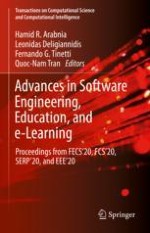Abstract
Contribution: This paper evaluates the compliance of the Software Engineering Program (SWE-Curriculum) at Jordan University of Science and Technology (JUST) with the first 5 of the 15 Software Engineering Knowledge Areas (SWE-KAs) of the SWEBOK-V3.0 of the IEEE Computer Society. This research is the first to measure the coverage of the SWE-KAs in any SWE-Curriculum.
Background: Although the SWE-Curriculum is accredited by the Institute of Engineering and Technology (IET), it is essential to line up the said Curriculum with the IEEE view of Software Engineering (SWEBOK-V3.0).
Research Questions: (1) What is the gap in the coverage of the SWE-KAs #1–5 topics across the said SWE-Curriculum? (2) What can be done to eliminate that gap?
Methodology: This research was divided into three parts. This paper focused on SWE-KAs#1–5, and the second and third (P#2 and P#3) shall focus on SWE-KA#6–10 and SWE-KA#11–15, respectively. The coverage of SWE-KAs#1–5 was inspected across the SWE-Curriculum courses. The results are identified as either Fully Compliant (e.g., the SWE-KA is fully covered across one or more of the SWE-Curriculum courses), Highly Compliant (e.g., the SWE-KA is highly covered), Partially Compliant (e.g., the SWE-KA is partially covered), or Poorly Compliant (e.g., the SWE-KA is poorly covered).
Findings: The compliance was found as Fully Compliant in the cases of the Software Requirements, Software Design, and Software Testing SWE-KAs, while it was found as Partially Compliant in the cases of the Software Construction and Software Maintenance SWE-KAs.
